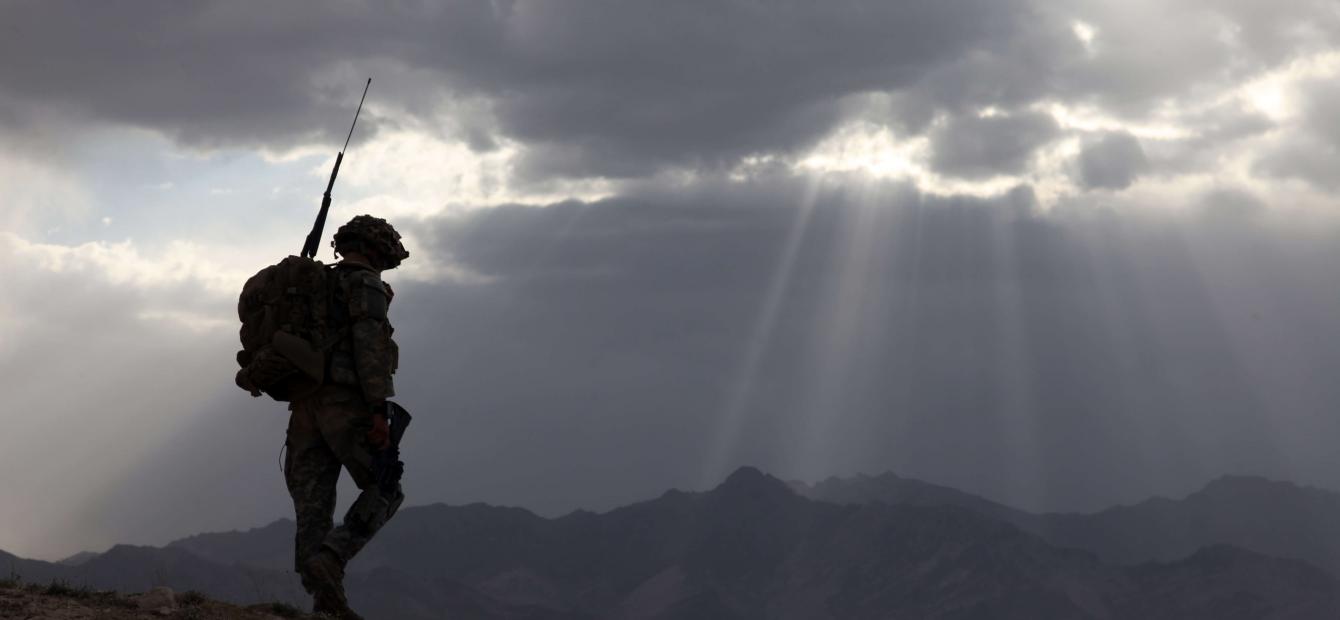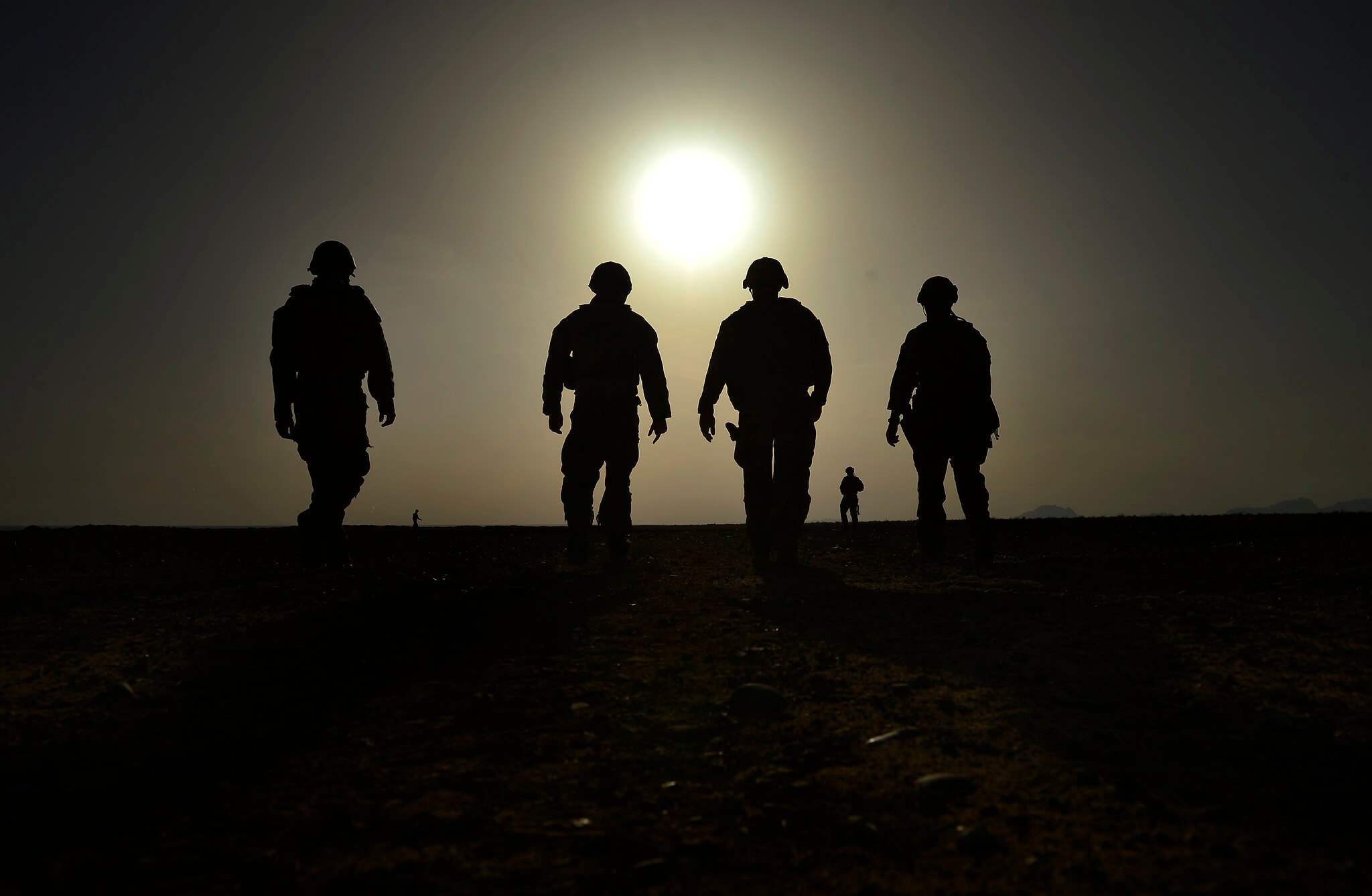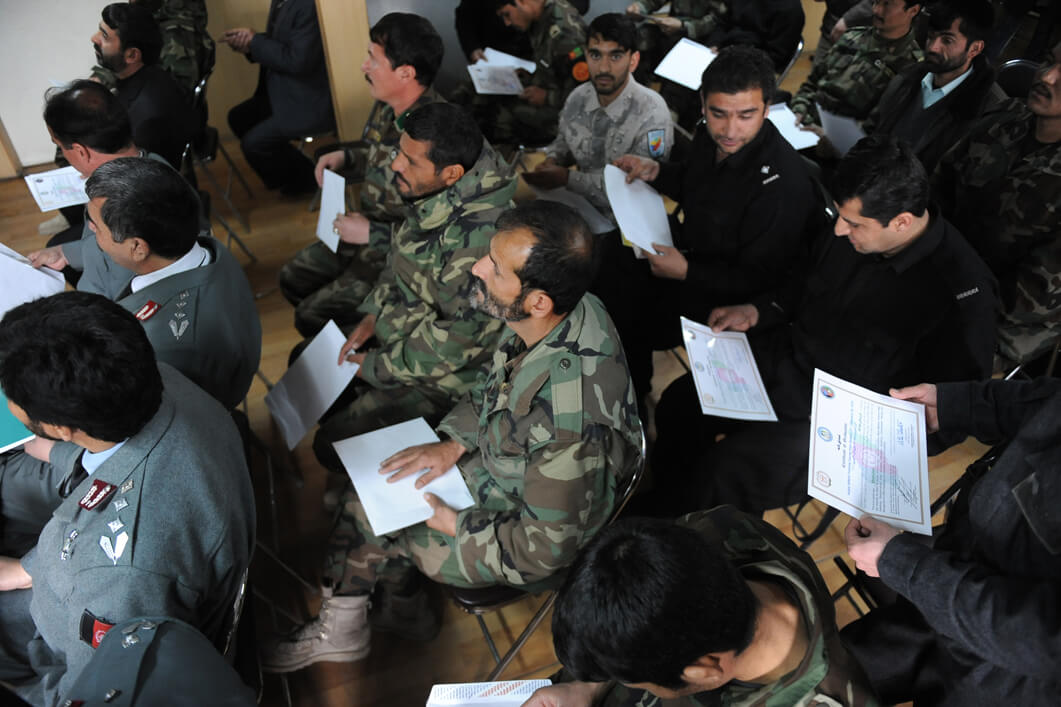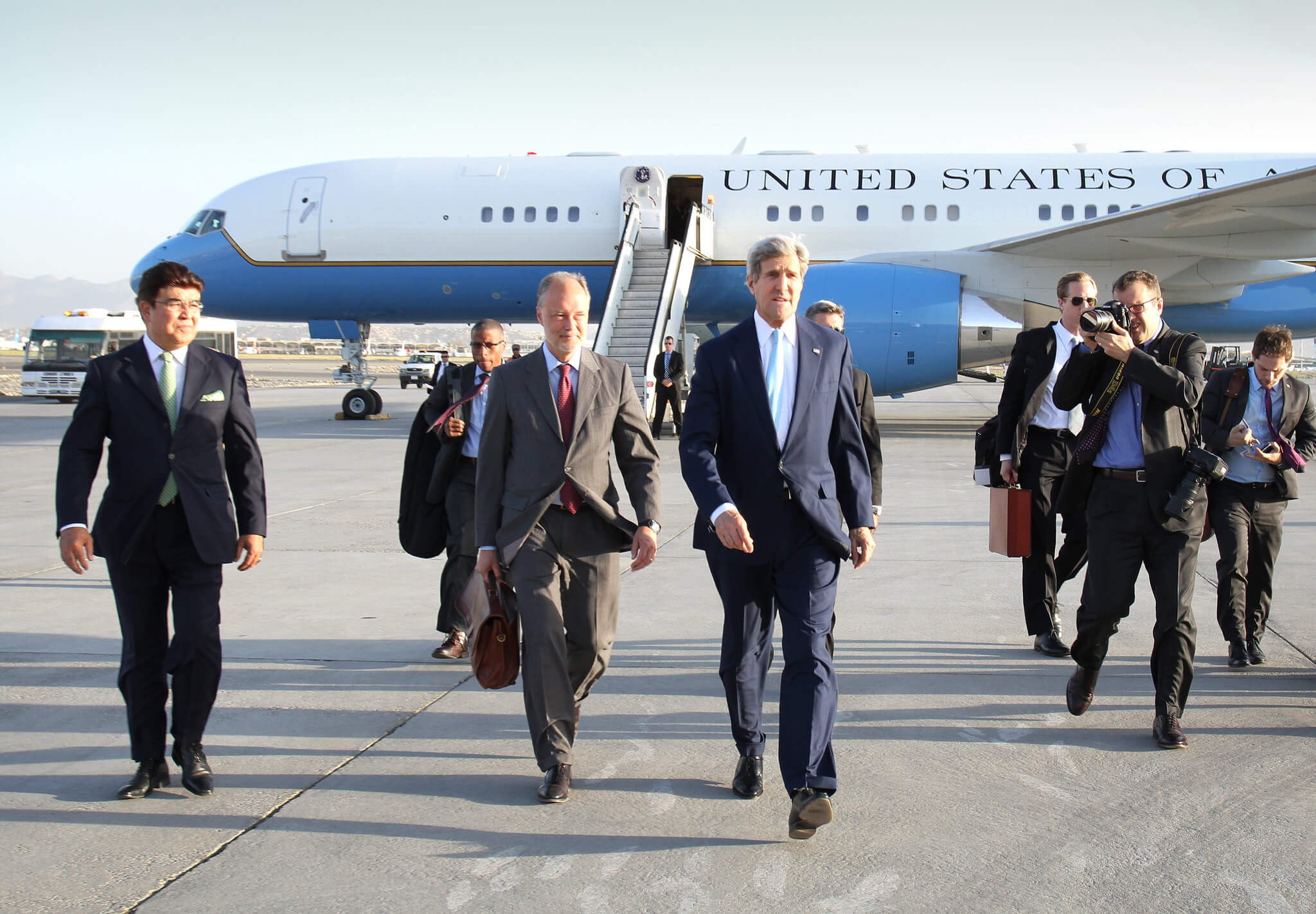
Afghanistan: Still caught up in an overreaction to terrorism
Libya, Mali, Afghanistan and Syria have been hotbeds of conflict for years on end. In each of these conflicts, the West is involved, either directly or indirectly by means of NATO or UN missions. In this Clingendael Spectator series on Western interventions, the current status and the future of the conflicts will be analysed. First stop: Afghanistan, that is still caught up in the biggest overreaction to terrorism in history. Do current negotiations offer some momentum for peace?
Almost two decades since the beginning of the current international intervention in Afghanistan, it is easy to forget how we got there. Let’s rewind. The starting point is 9/11. Nineteen men affiliated with Al Qaeda hijacked four planes. Fifteen of the hijackers were citizens of Saudi Arabia; two came from the United Arab Emirates; one from Egypt and one from Lebanon. Zero – it is worth repeating – zero came from Afghanistan. What follows is the start of the biggest overreaction to terrorism ever.
How we got there
Both the high-level targets and the unprecedented scale of this attack demanded a quick response. Seven days after the attacks, the United States Congress passed new legislation1
that authorised the use of American armed forces against those responsible for the attacks and those who harbored them. This opened the way to military attacks on Afghanistan. While the Taliban regime was not necessarily unwilling to hand over Osama bin Laden2
, the United States (US) had no patience to negotiate terms of extradition: American citizens needed to see firm action and Afghanistan was ‘guilty by association.’3
The US launched Operation Enduring Freedom on 7 October 2001 with its principal ally, the United Kingdom (UK). Later, other allies joined this counter-terrorism offensive, which was only shut down thirteen years later by US President Barack Obama. The legal basis for Operation Enduring Freedom remains unclear as the mission had no specific United Nations Security Council (UNSC) mandate. While two UNSC resolutions, 13684 (12 September) and 13735 (28 September), provided states with a general authorisation to take action, there was no specific resolution authorising a military operation in or an invasion of a country.

On the one hand, this may not have been an impediment as Article 51, under Chapter VII of the UN Charter6 , confirms that states have the “inherent right of individual or collective self-defense if an armed attack occurs.” On the other hand, the 9/11 attacks did not constitute ‘armed attacks’ by another state but rather a non-conventional violent act by a non-state actor. While this debate will never be concluded, there was general consensus that the US had the right to take action after 9/11. This can be distilled from the virtually unanimous condemnation from world leaders and the immediate international calls to step up counter-terrorism measures.7 The question remains, however, what type of military action was justified under the circumstances.
The military mission that did get a clear UN mandate (from resolution 13868 of December 2001) was the International Security Assistance Force (ISAF) mission, launched in December 2001. When references are made to the ‘good war'9 of Afghanistan compared to the ‘bad war’ of Iraq, it is mostly the UN mandated ISAF mission that is referred to. In contrast, the counter-terrorism mission, Operation Enduring Freedom, became part of a broader US-led ‘War on Terror.’ It was rolled out in various countries and regions including the Philippines and the Horn of Africa, and has been heavily criticised for unlawful and arbitrary detention and use of drone strikes.10
ISAF can be described as a stabilisation mission as it helped to establish and maintain order, initially only in Kabul and surrounding areas and later in the entire country. For thirteen years, until the end of the mission in December 2014, ISAF ran parallel to Operation Enduring Freedom. At its height, the ISAF mission consisted of more than 130,000 troops coming from 51 NATO and partner countries.
Current status
All this started in 2001 following a terrorist attack. Fast forward 18 years and there is still an international military mission in Afghanistan: The NATO-led Resolute Support Mission (RSM).11
This mission has shifted away from direct combat support to ‘training, advising and assisting’ the Afghan National Defense and Security Forces (ANDSF). While the training mission is small compared to the earlier troop commitments in Afghanistan, it is still part of what is the longest war in modern history. What’s worse is that it is a war that started as an overreaction to terrorism and that, through an unprecedented proliferation of mission creep12
, has gotten us into a highly challenging democratisation and state building project that is marred by corruption and political instability, and does not offer an easy exit.
In the early years following 2001, the ambitious state building project was going to create the ‘Switzerland in the Hindu Kush’. The country was relatively stable and the Taliban was not expected to rise from the ashes of the easy military victory.13 What nobody expected, however, was that the conflict, basically at very low intensity since the Taliban regime was toppled from power after a few months, would morph into a protracted crisis with an ever stronger insurgency of various Taliban groups. Although the exact outlines of a future peace process are still difficult to predict, there is one certainty: the Taliban will be negotiating from a position of strength and increased legitimacy.14
Without any prospect of victory, the international community’s commitment to Afghanistan soon started to shift towards an eagerness to get international troops out of the country and generally decrease the international presence. In particular, three parallel transitions – economic, political and security – were going to give the country a much needed boost in ownership, maturity and sustainable development. For the international community, they at least partially also represented something else: a ticket out of Afghanistan.
Losing the war
The security transition (2011-2014) is the clearest example, which ended the ISAF mission and resulted in the drawdown of most international troops. As mentioned, it shifted the focus of the international support role from direct combat to training, advising and assisting under the RSM. As a result, the ANDSF did become more independent in their combat operations, something which in recent years has also become visible in terms of the number of casualties. In this case, more ownership tragically means more Afghan deaths. President Ghani mentioned in the beginning of 2019 that a staggering 45,000 members of the security forces had been killed since he came into office in 2014.15
In contrast, he mentioned international forces suffered 72 fatal casualties in the same period.

My argument has always been that the security transition was too quick and based on the wrong motives. Instead of evaluating the security and conflict dynamics on the ground, this transition was mainly motivated by political interests of Western capitals far removed from the battlefield. While it is clear that the international (combat) troops could not stay forever in Afghanistan, it also seems to be the case that the hastened troop drawdown is partly responsible for the comeback of the Taliban.
Aid dependency remains
The economic transition has proven a tough challenge. Poverty levels have hardly changed since 2001 and even saw an increase after 2011. While Gross Domestic Product has reached more than 20 million US dollars, economic growth has been more or less stagnant since 2012.16
In the financial year 2017-2018, around 66 per cent of Afghanistan’s budget was funded through international donor support programs, while only 33 per cent was raised through domestic revenues.17
International donors are trying to increase ‘on-budget’ support (assistance provided directly through the government’s core budget). However, in 2017 this type of support had only reached 56 per cent – in fact even a decrease from the previous year. At the same time, large portions of on-budget support such as the Afghan Reconstruction Trust Fund (ARTF) do not really represent Afghan ownership as the important decisions about what to do with those funds are still taken by the World Bank. The bottom line is that Afghanistan remains a highly aid-dependent country.18
Political fragmentation around peace
The political transition occurred even less smoothly. After an interim government and two consecutive terms of president Karzai, a National Unity Government was basically invented by the Obama Administration after the fraud-ridden presidential elections of 2014.19
The resulting ‘forced marriage’ between Chief Executive Abdullah Abdullah and President Ashraf Ghani had to be rescued from administrative collapse in April 2016 by then Secretary of State John Kerry, who flew to Kabul to confirm that the government’s continuation was in fact legitimate – probably the clearest sign that Afghan ownership (and legitimacy) was lacking at the political level.20
Since then, political instability has increased. The political opposition is currently using the parallel tracks of the Moscow and Doha peace talks to raise their own profiles and weaken the government. As such, the peace process so far seems to be more a divisive political tool than a sign of hope for future reconciliation.

At the same time, democratisation remains also, quite logically given the time frame we are working in, a huge challenge. Elections are constantly postponed, sometimes for a couple of years. Fraud has been a concern in all of them. The country is basically still run by the former warlords and other traditional power brokers of the time before and immediately after the Taliban regime. While having one of the biggest youth bulges of the world, the young population has, two decades after 9/11, not translated into a new generation of politicians. Power is still much more with individual strongmen (indeed still all mostly male) than with institutions such as the lower and upper houses of parliament. In many ways, the promise of democracy has so far been an empty shell, especially for those that think direct or indirect representation will help to break through the engrained power configuration of the political establishment.
Future perspective
Abandoning Afghanistan should not be an option, especially if we take the lessons from history seriously and if we are committed to promises made to the Afghan people. Those promises are also part of mission creep: while perhaps not part of the initial justification to attack and invade Afghanistan, they increasingly became part of the political rhetoric of the state building project in the country. Similarly, the international mission has become part of a broad development programme that is about much more than only preventing Afghanistan from again becoming a safe haven or launchpad for terrorist groups. There is no denying these broader development goals, regardless of how they have crept into the original missions.
Foreign troops are, however, not necessarily a long-term component of this broader development mission. They cannot stay forever, and their withdrawal may even have positive consequences, for peace and Afghan ownership. In an earlier article in the Clingendael Spectator, I already discussed three basic options for the west’s withdrawal from Afghanistan.21 In short: 1) muddling through by keeping the situation as it is (no complete withdrawal); 2) removing the civilian and military missions from Afghanistan (complete withdrawal); and the most likely scenario 3) removing the military but keeping the civilian mission. I wrote: “It is unlikely that the international community will ever completely remove the hand from the water. Even after all the international combat troops have been withdrawn – something inevitable soon – there will still be assistance for many years to come in the form of humanitarian aid, development cooperation, capacity building and the upkeep and salaries of Afghan security forces. The investment and sacrifices of more than 50 countries over the past 17 years have simply created too much vested interest.”22
However, in the end it is not about what the support ultimately looks like, but more about whether a formal peace process can deliver a political solution for this conflict. The primacy of a political solution has been clear for many years, but the lack of a clear political strategy aimed at reconciliation has hampered the support role of international missions in Afghanistan for most of the past two decades. The biggest failure of the entire international mission is that it was unable to broker opportunities for peace and reconciliation earlier on. As a result of the political impasse, each year that goes by around ten thousand civilians are killed or injured.23 It is a tragic form of collateral damage that the international community has been unable to prevent during almost twenty years.
Incompatible national and regional interests
While there is now some momentum for peace, expectations should still be low about an agreement that can effectively bring peace and reconciliation. The problem lies in the hugely complex situation of two parallel chess boards for peace. On the intra-Afghan chessboard, various groups need to reconcile and agree on a way forward in a context that is marred by political divisions, traditional rivalries, structural center-periphery gaps and a lack of national identity.
On the international chessboard, a huge number of regional and international power holders need to agree on the final intra-Afghan agreement, while they bring wide-ranging and often competing political agendas to the table. The list of stakeholders is almost endless but includes at least: Pakistan, Iran, the five Central Asian republics north of Afghanistan, China, India, the United States, the European Union, Russia and Turkey. Some chess pieces are moving forward but others seem to be stuck or going in circles. While everybody would probably agree that the only sustainable outcome for peace and reconciliation is an ‘intra-Afghan agreement with regional support’, the strong divisions at both national and regional level currently turn this objective into a political pipedream. As long as there is no breakthrough, we continue to be caught up in the biggest overreaction to terrorism in recent history.
- 1This was the ‘Joint Resolution to authorise the use of United States Armed Forces against those responsible for the recent attacks launched against the United States’ (AUMF), passed by the US Congress on September 14 and effective on September 18, 2001.
- 2‘Bush rejects Taliban offer to hand Bin Laden over’, The Guardian (14 October 2001).
- 3Sikander Ahmed Shah writes: “The Taliban administration was perhaps guilty of ‘state toleration’ or ‘state support’ of al-Qaeda and its activities, but it neither exercised ‘effective control’ as outlined in [the case of] Nicaragua, nor ‘overall control’ as presented in the Tadić [case] judgment.” Sikander Ahmed Shah, War on Terrorism: Self Defense, Operation Enduring Freedom, and the Legality of U.S. Drone Attacks in Pakistan, Washington University Global Studies Law Review, Vol. 9, Issue 1 (2010), p. 102.
- 4UNSC, Resolution 1368, ‘Threats to international peace and security caused by terrorist acts’ (12 September 2001).
- 5UNSC, Resolution 1373, ‘Threats to international peace and security caused by terrorist acts’ (28 September 2001).
- 6Article 51 reads: ‘Nothing in the present Charter shall impair the inherent right of individual or collective self-defence if an armed attack occurs against a Member of the United Nations, until the Security Council has taken measures necessary to maintain international peace and security. Measures taken by Members in the exercise of this right of self-defence shall be immediately reported to the Security Council and shall not in any way affect the authority and responsibility of the Security Council under the present Charter to take at any time such action as it deems necessary in order to maintain or restore international peace and security.’
- 7For example, a 2002 RAND Europe reports writes about the reaction of several European countries: ‘Top ministerial steering committees and task forces were quickly put together in all countries to provide leadership and a focal point in the confusion that followed the attacks. In particular the security and surveillance of commercial aviation, designated objects and components of critical infrastructures, dignitaries and, to a lesser extent, country borders were immediately strengthened. Intelligence gathering and intelligence sharing were increased, both domestically and internationally. All countries engaged in and adhered to international negotiations, most notably within the EU, but also with the UN, the USA and NATO (…).’ Rand Europe, ‘Quick scan of post 9/11 national counter-terrorism policymaking and implementation in selected European countries’, Research project for the Netherlands Ministry of Justice (May 2002), p. 4.
- 8UNSC, Resolution 1368, ‘The situation in Afghanistan’ (20 December 2001).
- 9In his 2014 book with this concept in the title, Jack Fairweather writes: ‘The Good War, in the soaring rhetoric of this idealism [of human rights, democracy and the free market], was more than a necessary act of retaliation; it was a test case for humanitarian intervention, and aid workers' ability to transform the lives of oppressed people in the developing world.’ Jack Fairweather. The Good War: Why We Couldn’t Win the War or the Peace in Afghanistan. New York: Basic Books, 2014, Prologue.
- 10On the use of drones, see, for example, Jeremy Scahill, The Assassination Complex: Inside the Government's Secret Drone Warfare Program. Simon and Schuster, 2017. On arbitrary arrests, Amnesty and Human Rights Watch have reported at various times.
- 11For more details, see the website of the NATO-led mission, where also a ‘placemat’ can be found showing the current troop numbers and contributions per country. The Resolute Support Mission currently has around 17,000 troops from 39 NATO allies and partners.
- 12A phrase coined in the early 1990s in the context of the UN Peacekeeping mission in Somalia, mission creep is used to describe the gradual expansion of an intervention or mission, beyond its original focus, objectives or scope, especially after some early successes. When it comes to the latter, the initial military campaign to defeat the Taliban was relatively short and straightforward.
- 13Thom Shanker and Eric Schmitt, ‘A Nation Challenged: Military Campaign; Taliban Defeated, Pentagon Asserts, But War Goes On’, The New York Times (11 December 2001).
- 14Thomas Gibbons-Neff, ‘Afghan Official Warns of U.S. Deal With Taliban ‘That Doesn’t End in Peace’’, The New York Times (14 March 2019).
- 15‘Afghanistan's Ghani says 45,000 security personnel killed since 2014’, BBC News (25 January 2019, see.
- 16World Bank data (up to 2017).
- 17ATR Consulting, Aid Effectiveness in Afghanistan: A Research Study by ATR Consulting (March 2018), Commissioned by Oxfam and the Swedish Committee for Afghanistan (SCA), p. 7.
- 18This is also the conclusion of a 2018 USIP paper. The authors write in the conclusion: ‘Finally, it must be recognised that even the best-designed and most successful budgetary reforms, and continuing robust revenue growth, would no more than marginally reduce Afghanistan’s enormous structural fiscal gap, and therefore that the country will remain highly aid dependent.’ See: William A. Byrd and Shah Zaman Farahi, ‘Improving Afghanistan’s Public Finances in 2017–2019: Raising Revenue and Reforming the Budget’, USIP Special Report, Nr. 424 (April 2018), p. 12.
- 19‘Kerry Visits Afghanistan to Urge Deal on the Election’, The New York Times
- 20‘Kerry: ‘No end date’ for Afghanistan power-sharing’, BBC News (9 April 2016).
- 21Jorrit Kamminga, ‘The Hand-and-Water Tale: Options for the West in Afghanistan’, Clingendael Spectator (14 March 2018).
- 22Ibid.
- 23For an overview of the civilian casualties, see: UNAMA, ‘Afghanistan: Protection of Civilians in Armed Conflict’, Annual Report 2018 (February 2019).


